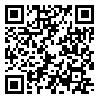Volume 16, Issue 56 (Jan 2007)
J Mazandaran Univ Med Sci 2007, 16(56): 115-125 |
Back to browse issues page
Download citation:
BibTeX | RIS | EndNote | Medlars | ProCite | Reference Manager | RefWorks
Send citation to:



BibTeX | RIS | EndNote | Medlars | ProCite | Reference Manager | RefWorks
Send citation to:
Salehifar E, Ala S, Gholami K. Knowledge, attitude and performance of pharmacists and nurses in Mazandaran province, Iran regarding adverse drug reaction and its reporting, 2005.. J Mazandaran Univ Med Sci 2007; 16 (56) :115-125
URL: http://jmums.mazums.ac.ir/article-1-186-en.html
URL: http://jmums.mazums.ac.ir/article-1-186-en.html
Abstract: (15832 Views)
Background and purpose: Pharmacovigilance is a science that focuses on the detection, assessment, and prevention of adverse drug reactions (ADRs) in the post-marketing phase. Its back bone is spontaneous reporting by health care workers via completing the yellow cards. Due to the low reporting of ADRs in the Mazandaran province, this study was designed to evaluate the knowledge, attitude and performance of pharmacists and nurses regarding ADRs reporting.
Materials and Methods: This descriptive study was done on 286 health care workers including 67 pharmacists and 219 nurses, selected randomly from different cities of the province. The standard questionnaire of European pharmacovigilance research group was used as the data collection tool. In the field of knowledge, definition of pharmacovigilance, awareness of the national criteria for reporting the ADRs and awareness about the terminology occurrence rates of ADRs were questioned. To evaluate the attitude, reaction of subjects to the some simulated ADRs and reasons of underreporting were assessed. In the field of performance, numbers of reported ADRs and also the sites where reports sent from were asked. Data were analyzed using independent sample t-test for quantitative variables and Chi-square and Kendall’s tau-b for nominal and ordinal variables, respectively using SPSS software. P< 0.05 was considered as significant level.
Results: There was no satisfying knowledge in each of the two groups. In spite of exposure of more than 80% of subjects to the ADRs, the mean reported ADRs values for pharmacists and nurses were very low as 0.72 ± 2.8 and 0.17 ± 0.67 respectively (P<0.01). Nurses liked to report most of ADRs to the physicians, nursing stations and pharmacist in spite of the national center. Considering these reports, they were more active than the pharmacists (P<0.001). The main causes of underreporting of the suspected ADRs were not being sure about the causative effect of the drug, unawareness of the existence of a national center, the ADRs were too well known to report and the ADRs were too trivial.
Conclusion: Since most of the heath care workers were not familiar with the spontaneous reporting system, interventions such as presenting pharmacovigilance workshops in the hospitals of the province focusing on the aims of pharmacovigilance, completing the yellow card, clarifying the reporting criteria and also considering the pharmacovigilance in the training courses of students are recommended.
Materials and Methods: This descriptive study was done on 286 health care workers including 67 pharmacists and 219 nurses, selected randomly from different cities of the province. The standard questionnaire of European pharmacovigilance research group was used as the data collection tool. In the field of knowledge, definition of pharmacovigilance, awareness of the national criteria for reporting the ADRs and awareness about the terminology occurrence rates of ADRs were questioned. To evaluate the attitude, reaction of subjects to the some simulated ADRs and reasons of underreporting were assessed. In the field of performance, numbers of reported ADRs and also the sites where reports sent from were asked. Data were analyzed using independent sample t-test for quantitative variables and Chi-square and Kendall’s tau-b for nominal and ordinal variables, respectively using SPSS software. P< 0.05 was considered as significant level.
Results: There was no satisfying knowledge in each of the two groups. In spite of exposure of more than 80% of subjects to the ADRs, the mean reported ADRs values for pharmacists and nurses were very low as 0.72 ± 2.8 and 0.17 ± 0.67 respectively (P<0.01). Nurses liked to report most of ADRs to the physicians, nursing stations and pharmacist in spite of the national center. Considering these reports, they were more active than the pharmacists (P<0.001). The main causes of underreporting of the suspected ADRs were not being sure about the causative effect of the drug, unawareness of the existence of a national center, the ADRs were too well known to report and the ADRs were too trivial.
Conclusion: Since most of the heath care workers were not familiar with the spontaneous reporting system, interventions such as presenting pharmacovigilance workshops in the hospitals of the province focusing on the aims of pharmacovigilance, completing the yellow card, clarifying the reporting criteria and also considering the pharmacovigilance in the training courses of students are recommended.
Type of Study: Research(Original) |
| Rights and permissions | |
 |
This work is licensed under a Creative Commons Attribution-NonCommercial 4.0 International License. |






